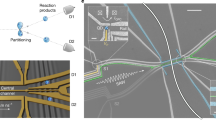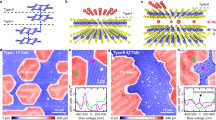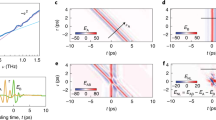Abstract
I SUPPOSE teachers still use gold-leaf electroscopes for their junior lectures; certainly I have found nothing else so dead-beat, or so readily understood; and by projecting with a lens a shadow of the leaves on a square-foot translucent screen, the movements are perfectly visible to a large audience by day-light. But the one objection to the instrument, when used for explaining the fundamental facts, say, of induction, is that it indicates similarly positive and negative potentials. Yesterday, however, my assistant, Mr. E. E. Robinson, ingeniously stood the metal-cased instrument on a cake of paraffin wax, and electrified its outside negatively. By this process the zero of deflection is changed; the leaves stand apart for zero potential, diverge more for positive, and collapse for negative. A zero shadow-pointer and rough scale may be readily used; and I propose now to mount a projection electroscope in a suitable slightly charged Leyden jar, whose outer coat can then be treated as the usual earthed terminal of the instrument, whose case is connected to or formed by the inner coat of the jar. The insulated or variable terminal is conveniently arranged as an insulated sphere or other shaped body on the lecture table, not far from the small screen, attached by a long enough thin wire to the leaves—of which it is perhaps best to have only one movable.
This is a preview of subscription content, access via your institution
Access options
Subscribe to this journal
Receive 51 print issues and online access
$199.00 per year
only $3.90 per issue
Buy this article
- Purchase on SpringerLink
- Instant access to full article PDF
Prices may be subject to local taxes which are calculated during checkout
Similar content being viewed by others
Rights and permissions
About this article
Cite this article
LODGE, O. Electroscopes in Lecture. Nature 51, 320 (1895). https://doi.org/10.1038/051320b0
Issue date:
DOI: https://doi.org/10.1038/051320b0



